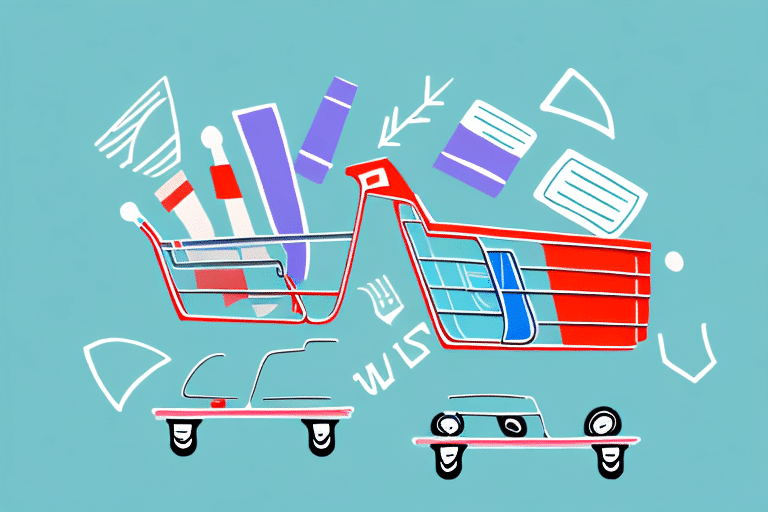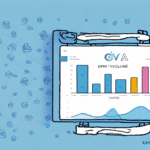Understanding Cart Abandonment
Cart abandonment occurs when customers add items to their online shopping cart but leave the website without completing the purchase. This behavior is prevalent in the e-commerce industry and can significantly impact your conversion rates and overall revenue.
What Is Cart Abandonment and Why It Matters
Cart abandonment is a critical metric for e-commerce businesses. According to Baymard Institute, the average cart abandonment rate across various industries is around 69%. This high percentage indicates that a substantial number of potential sales are lost daily. Understanding the reasons behind cart abandonment is essential for implementing effective strategies to recover these lost sales.
The Impact on Your Business
The repercussions of cart abandonment extend beyond lost sales. A study by BigCommerce highlights that 17% of cart abandonments are due to a lack of trust in the website or brand. This erosion of trust can lead to negative reviews, diminished word-of-mouth recommendations, and long-term challenges in brand perception. Additionally, a complicated checkout process or unexpected costs, such as shipping fees, can exacerbate the issue.
Analyzing Cart Abandonment Data
To effectively reduce cart abandonment rates, it's crucial to analyze the underlying data and identify actionable insights.
Identifying Common Reasons
Through customer surveys and behavior analysis, common reasons for cart abandonment include:
- Complicated checkout processes
- Unexpected shipping costs
- Lack of trust in the website
- Limited payment options
- Technical issues during checkout
Timing of Abandonment
Understanding when customers abandon their carts can help tailor recovery strategies. For instance, if abandonment occurs during the checkout process, it might indicate technical issues or excessive form fields. Conversely, abandonment before reaching checkout could suggest price comparisons or indecision.
Enhancing User Experience
Improving the overall user experience can significantly reduce cart abandonment rates. Key areas to focus on include:
- Clear and informative product descriptions
- Easy website navigation
- Transparent pricing and policies
- Responsive design for mobile users
Crafting Effective Cart Abandonment Strategies
Developing strategies to address cart abandonment involves multiple tactics aimed at encouraging customers to complete their purchases.
Personalized Cart Abandonment Emails
Sending personalized emails can remind customers of their abandoned carts and encourage them to return. Effective email strategies include:
- Using the customer's name in the subject line
- Highlighting the abandoned items with images
- Offering incentives such as discounts or free shipping
- Including a clear call-to-action button
Creating a Sense of Urgency
Incorporating urgency can motivate customers to act quickly. Tactics include:
- Limited-time offers (e.g., "Offer expires in 24 hours")
- Displaying low stock warnings
- Highlighting exclusive deals for email recipients
Offering Incentives
Providing incentives can effectively reduce cart abandonment. Consider offering:
- Discount codes for returning customers
- Free shipping on orders
- Loyalty points or rewards
Optimizing and Testing Your Cart Abandonment Efforts
Continuous optimization and testing are vital to enhancing the effectiveness of cart abandonment strategies.
A/B Testing Email Campaigns
Implementing A/B testing allows you to determine which email elements resonate most with your audience. Test variables such as:
- Subject lines
- Email content and layout
- Call-to-action placement
- Timing of email sends
Measuring Success
Track key performance indicators (KPIs) to assess the effectiveness of your cart abandonment campaigns. Important metrics include:
- Email open rates
- Click-through rates
- Conversion rates from email recipients
- Revenue recovered
Automating Cart Abandonment Emails
Utilizing automation tools ensures timely and consistent delivery of cart abandonment emails. Features to look for in automation platforms include:
- Trigger-based email sends
- Personalization capabilities
- Integration with your e-commerce platform
- Analytics and reporting tools
Enhancing Recovery with Additional Tactics
Beyond email campaigns, integrating other marketing channels can improve recovery rates.
Retargeting Ads
Retargeting ads serve as reminders to customers about their abandoned carts as they browse other websites. Effective retargeting strategies involve:
- Consistent messaging with email campaigns
- Displaying images of abandoned products
- Offering special incentives through ads
Social Proof and Reviews
Incorporating social proof can alleviate customer concerns and build trust. This can be achieved by:
- Displaying customer reviews and ratings
- Showcasing testimonials
- Highlighting return policies and guarantees
Compliance and Best Practices
Ensuring compliance with privacy laws and adhering to best practices is crucial for maintaining customer trust and avoiding legal issues.
Privacy Law Compliance
When sending cart abandonment emails, comply with regulations such as GDPR and CAN-SPAM by:
- Obtaining explicit consent before collecting email addresses
- Providing clear unsubscribe options in every email
- Protecting customer data through secure practices
Optimal Timing for Emails
Sending emails at the right time can enhance their effectiveness. Best practices include:
- Sending the first email within an hour of abandonment
- Following up with a second email within 24 hours
- Considering time zones and customer behavior patterns
Conclusion
Reducing cart abandonment is essential for boosting your e-commerce conversion rates and revenue. By understanding the reasons behind cart abandonment, analyzing relevant data, and implementing effective strategies such as personalized emails, incentives, and retargeting ads, you can recover lost sales and enhance customer satisfaction. Continuously optimize your approaches through testing and stay compliant with privacy laws to ensure long-term success.




















